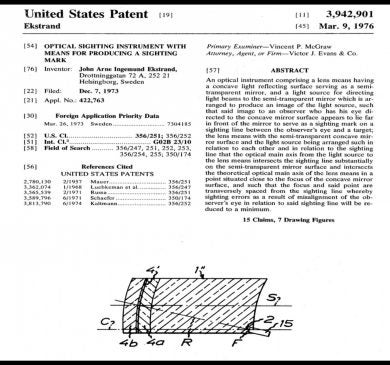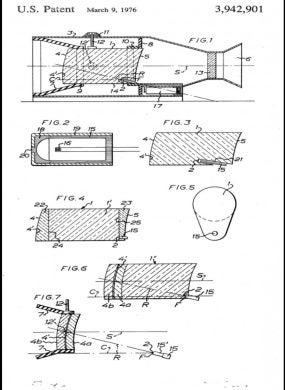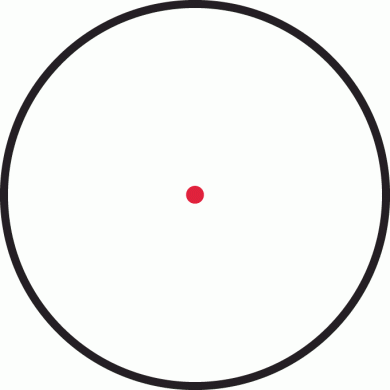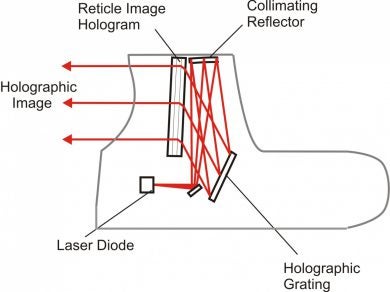About 15 years ago I sadly boxed up a brand new Red Dot Optic for it’s return to the manufacturer without ever having used it to fire a shot – the reticle was a blurry burst rather than a crisp clear dot. But before I called and asked for a return authorization, I decided to search the Internet looking for answers on the durability of my new glass. And that’s when I found it: my new optic wasn’t the problem, I was.
As a test, there were two initial suggestions – look at the reticle while wearing polarized glasses or look at the reticle with the rear back up iron sight (BUIS) flipped up. Boom, the dot was nearly perfect. It appeared that I had an astigmatism – my eye or cornea was mis-shaped, distorting the red dot.
What is astigmatism?
From the American Optometric Association:
Astigmatism is a common vision condition that causes blurred vision. It occurs when the cornea (the clear front cover of the eye) is irregularly shaped or sometimes because of the curvature of the lens inside the eye.
An irregularly shaped cornea or lens prevents light from focusing properly on the retina, the light-sensitive surface at the back of the eye. As a result, vision becomes blurred at any distance. This can lead to eye discomfort and headaches.

Red Dot Sights:
The reason an astigmatism is problematic for shooters who use red dot sights is because the dot is created with a collimating minating mirror. In a normal eye, those beams of light all have one focal point However in an astigmatic eye, those beams of light are refracted into multiple multiple focal points. The result is a blurry, distorted or “bursting” dot.

Wikipedia: Diagram of a typical “red dot” sight using a collimating mirror with a light-emitting diode at its focus that creates a virtual “dot” image at infinity.
Polarized glasses and the tiny hole in the BUIS help to sharpen the dot because both devices restrict the light rays entering your eye to only those that are both direct and parallel with the other light rays, eliminating reflections and some of the additional focal points.

The original Aimpoint patent.

The original Aimpoint patent.

Aimpoint M68 Red Dot Optic

Aimpoint RDS reticle.
Holographic Weapon Sights:
Working on similar principles but with slightly different mechanics, Holographic Weapon Sights (HWS) like those manufactured by EOTech, also project an illuminated reticle. One difference comes from the light bouncing off a “holographic grate” rather than into a single dot. For shooters with an astigmatism, HWS setups can appear to have less distortion than a RDS because the holographic grate can act similarly to a polarizing filer. However, HWS products are not completely astigmatic aberration-free.


EOTech patent.


EOTech HWS reticle.
Prismatic Optics:
Prismatic-based optics, on the other hand function more like traditional optics (like binoculars or rifle scopes), using lenses and etched glass to produce their reticles. Because of the lack of collimator or mirrors, most shooters with astigmatisms report less aberrations as compared to RDS or HWS systems. One side benefit is that since the reticle is etched in glass, rather than an image that is projected upon it, if a users batteries die or the electronics otherwise fail, most reticles revert to black.

Trijicon ACOG patent.

A Trijicon ACOG reticle.
Luckily, I scheduled an optometrist appointment before I sent my first RDS back for repair or replacement. Even luckier was that my doctor, who was a bombardier in the Vietnam War, also suffered from an astigmatism and had difficulties with viewing certain reticles in his bombsight. He was able to get me a proper prescription and suggest corrected sunglasses with polarized lenses.
So, you think you have an astigmatism, what now?
- Go to the optometrist and bring your sight with you. Explain to your doctor, or even draw, the reticle pattern you see when looking though your sight uncorrected.
- Get polarized, corrected sunglasses for daylight shooting.
- Try before you buy. Even with a proper prescription you may still have some distortion. Visit a dealer or find a friend who will let you use their sights.
- Maybe a RDS or HWS is not the right choice for you. There are several manufacturers of high-quality prismatic optics both with and without magnification.
- Try the rear BUIS trick. Can you live with that option?
- Focus on the target and not the dot.
Odd-shaped eyeballs, polarized sunglasses, reflection and refraction – And that’s ‘The More You Know’.

We are committed to finding, researching, and recommending the best products. We earn commissions from purchases you make using the retail links in our product reviews. Learn more about how this works.
 Your Privacy Choices
Your Privacy Choices
